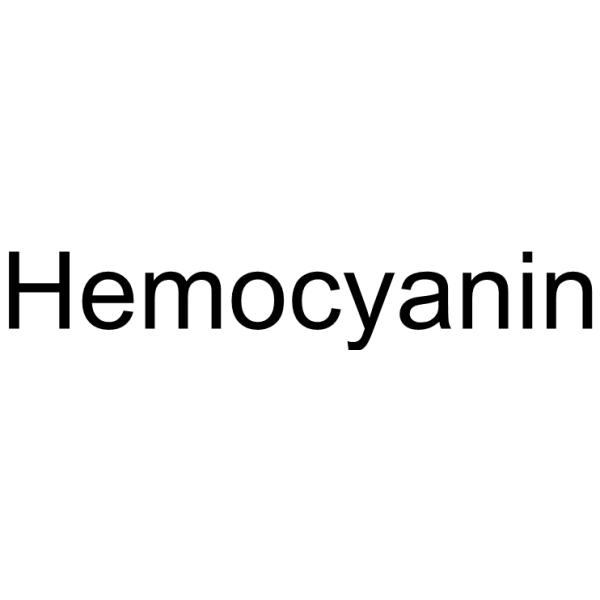Hemocyanin

Hemocyanin structure
|
Common Name | Hemocyanin | ||
|---|---|---|---|---|
| CAS Number | 9013-72-3 | Molecular Weight | N/A | |
| Density | N/A | Boiling Point | N/A | |
| Molecular Formula | N/A | Melting Point | N/A | |
| MSDS | USA | Flash Point | N/A | |
|
Binding of WIP to actin is essential for T cell actin cytoskeleton integrity and tissue homing.
Mol. Cell. Biol. 34(23) , 4343-54, (2014) The Wiskott-Aldrich syndrome protein (WASp) is important for actin polymerization in T cells and for their migration. WASp-interacting protein (WIP) binds to and stabilizes WASp and also interacts with actin. Cytoskeletal and functional defects are more sever... |
|
|
Identification and characterization of the related immune-enhancing proteins in crab Scylla paramamosain stimulated with rhubarb polysaccharides.
Mol. Immunol. 57(2) , 263-73, (2014) Recently, considerable interest has been focused on immunostimulants to reduce diseases in crab aquaculture. However, information regarding to the related immune-enhancing proteins in crabs is not available yet. In this study, rhubarb polysaccharides were tes... |
|
|
Tofacitinib suppresses antibody responses to protein therapeutics in murine hosts.
J. Immunol. 193(1) , 48-55, (2014) Immunogenicity remains the "Achilles' heel" of protein-based therapeutics. Anti-drug Abs produced in response to protein therapeutics can severely limit both the safety and efficacy of this expanding class of agent. In this article, we report that monotherapy... |
|
|
NEDD4 ubiquitinates TRAF3 to promote CD40-mediated AKT activation.
Nat. Commun. 5 , 4513, (2014) CD40, a member of tumour necrosis factor receptor (TNFR) superfamily, has a pivotal role in B-cell-mediated immunity through various effector pathways including AKT kinase, but the signal transduction of CD40-meidated AKT activation is poorly understood. Here... |
|
|
Impact of thiamine deficiency on T-cell dependent and T-cell independent antibody production in lake trout.
J. Aquat. Anim. Health 24(4) , 258-73, (2012) Lake trout Salvelinus namaycush on thiamine-replete and thiamine-depleted diets were evaluated for the effects of thiamine status on in vivo responses to the T-dependent antigen trinitophenol (TNP)-keyhole limpet hemocyanin (TNP-KLH), the T-independent antige... |
|
|
Adjuvant ganglioside GM2-KLH/QS-21 vaccination versus observation after resection of primary tumor > 1.5 mm in patients with stage II melanoma: results of the EORTC 18961 randomized phase III trial.
J. Clin. Oncol. 31(30) , 3831-7, (2013) The GM2 ganglioside is an antigen expressed in the majority of melanomas. The GM2-KLH/QS-21 vaccine induces high immunoglobulin M (IgM) and IgG antibody responses. The EORTC 18961 trial compared the efficacy of GM2-KLH/QS-21 vaccination versus observation.A t... |
|
|
Oral tolerance induction in humans.
Exp. Mol. Pathol. 93(3) , 449-54, (2012) Oral tolerance designates the status of systemic hyporesponsiveness against an antigen that makes contact with the immune system via the mucosa of the gastrointestinal tract. In various animal models of autoimmune disease the feeding of the particular autoant... |
|
|
Preparation and characterization of monoclonal antibody specific for copper-chelate complex.
J. Immunol. Methods 387(1-2) , 228-36, (2013) Monoclonal antibody (MAb) against chelated Cu(2+) was developed. The conjugate employed as immunogens in BALB/c mice to raise antibodies was synthesized using Cu(2+) coupling to keyhole limpet hemocyanin (KLH) via a bifunctional chelator (2-(4-isothiocyanatob... |
|
|
Selective B-cell expression of the MHV-68 latency-associated M2 protein regulates T-dependent antibody response and inhibits apoptosis upon viral infection.
J. Gen. Virol. 94(Pt 7) , 1613-23, (2013) To better understand the role of the M2 protein of the murine herpes virus strain 68 (MHV-68) in vivo, B-lymphocyte-restricted, M2-transgenic mice were constructed. The transgenic mice contained normal B-cell subpopulations in bone marrow, lymph nodes and spl... |
|
|
Differential regulation of hexameric and dodecameric hemocyanin from A. leptodactylus.
Biochim. Biophys. Acta 1834(9) , 1853-9, (2013) The oxygen binding properties of hemocyanins are regulated on a short time scale by effectors such as l-lactate, urate and protons, and on longer time scales by expression of the different types of subunits. For Astacus leptodactylus it was shown previously t... |